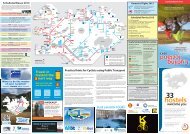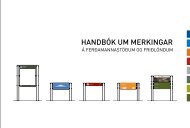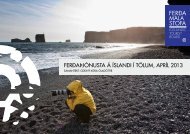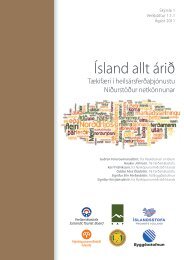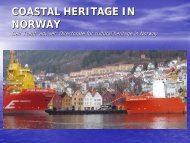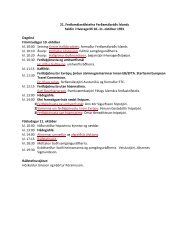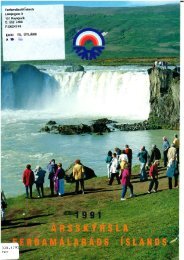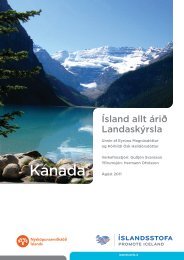Untitled
Untitled
Untitled
Create successful ePaper yourself
Turn your PDF publications into a flip-book with our unique Google optimized e-Paper software.
the individual traveler’s satisfaction/dissatisfaction with a travel<br />
purchase largely depends on a comparison of his [sic] expectation about<br />
a destination, or a previously held destination image, and his [sic]<br />
perceived performance of the destination (Chon 1990, p. 3).<br />
A pre-image of a destination is then a map that will be further<br />
interpretatively processed through tourist experiences of the actual<br />
encounter with the territory of a tourist destination. Yet, lurking behind is a<br />
rather static spatial imagery which suggests a clear division between a<br />
cartographic pre-image here and tourist experiences of a destination there.<br />
Image 3.5: Here & there. 25<br />
As it turns out, it may well be that the tourist and the tourism<br />
researcher are very much alike when it comes to how they in practice<br />
produce knowledge through “cartographic reason” (Olsson 2007) and<br />
manage to trespass between here and there.<br />
Tourism research<br />
While research methodology can be considered to be universal for all<br />
science, various fields of research have also developed their own traditions<br />
and emphasis in relation to their respective concerns. Hence, tourism<br />
research is in general aligned with the methodology of social science and<br />
with tourism theory in particular. Here we will consider tourism research<br />
methodology in relation to a tourism theory in which mobility and<br />
geographical methodology is central.<br />
25 http://www.cartoonstock.com/newscartoons/cartoonists/rro/lowres/rron227l.jpg (retrieved 2009-04-15)<br />
51



